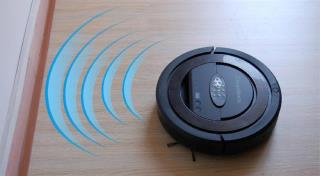Kā instalēt Thelia 2.3 operētājsistēmā Debian 9
Vai izmantojat citu sistēmu? Thelia ir atvērtā pirmkoda rīks e-biznesa vietņu izveidei un tiešsaistes satura pārvaldīšanai, kas rakstīts PHP. Thelia pirmkods i
Omeka Classic 2.4 CMS is a free and open source digital publishing platform and Content Management System (CMS) for sharing digital collections and creating media-rich online exhibits. Omeka Classic 2.4 CMS enables scholars, librarians, archivists, museum professionals and cultural enthusiasts to create complex narratives and share rich collections and content at low cost without sacrificing design and technical quality. Omeka accepts and stores all types of files, including images, video, audio, multi-page documents, PDFs, Power Point presentations; and can handle large archives of metadata and files (with over 1 million items) with the only limitations being the power of your server.
In this tutorial we are going to install Omeka Classic 2.4 CMS on an Ubuntu 16.04 LAMP VPS using Apache web server, PHP 7.0, and a MariaDB database.
We will start by adding a new sudo user.
First, log into your server as root:
ssh root@YOUR_VULTR_IP_ADDRESS
Add a new user called user1 (or your preferred username):
adduser user1
When prompted, enter a secure and memorable password. You will also be prompted for your "Full Name" and some other details, but you can simply leave them blank by pressing Enter.
Now check the /etc/sudoers file to make sure that the sudoers group is enabled:
visudo
Look for a section like this:
%sudo ALL=(ALL:ALL) ALL
This line tells us that users who are members of the sudo group can use the sudo command to gain root privileges. It will be uncommented by default so you can simply exit the file.
Next we need to add user1 to the sudo group:
usermod -aG sudo user1
We can verify the user1 group membership and check that the usermod command worked with the groups command:
groups user1
Now use the su command to switch to the new sudo user user1 account:
su - user1
The command prompt will update to indicate that you are now logged into the user1 account. You can verify this with the whoami command:
whoami
Now restart the sshd service so that you can login via ssh with the new non-root sudo user account you have just created:
sudo systemctl restart sshd
Exit the user1 account:
exit
Exit the root account (which will disconnect your ssh session):
exit
You can now ssh into the server instance from your local host using the new non-root sudo user user1 account:
ssh user1@YOUR_VULTR_IP_ADDRESS
If you want to execute sudo without having to type a password every time, then open the /etc/sudoers file again, using visudo:
sudo visudo
Edit the section for the sudo group so that it looks like this:
%sudo ALL=(ALL) NOPASSWD: ALL
Please note: Disabling the password requirement for the sudo user is not a recommended practice, but it is included here as it can make server configuration much more convenient and less frustrating, especially during longer systems administration sessions. If you are concerned about the security implications, you can always revert the configuration change to the original after you finish your administration tasks.
Whenever you want to log into the root user account from within the sudo user account, you can use one of the following commands:
sudo -i
sudo su -
You can exit the root account and return back to your sudo user account any time by simply typing the following:
exit
Before installing any packages on the Ubuntu server instance, we will first update the system.
Make sure you are logged in to the server using a non-root sudo user and run the following commands:
sudo apt-get update
sudo apt-get -y upgrade
Install the Apache web server:
sudo apt-get -y install apache2
Then use the systemctl command to start and enable Apache to execute automatically at boot time:
sudo systemctl enable apache2
sudo systemctl start apache2
Check your Apache default site configuration file to ensure that the DocumentRoot directive points to the correct directory:
sudo vi /etc/apache2/sites-enabled/000-default.conf
The DocumentRoot configuration option will look like this:
DocumentRoot "/var/www/html"
We now need to enable the mod_rewrite Apache module, so ensure that your Apache default site configuration file is still open, and add the following Directory Apache directives just before the closing </VirtualHost> tag, so that the end of your configuration file looks like this:
<Directory /var/www/html/>
Options Indexes FollowSymLinks MultiViews
AllowOverride All
Order allow,deny
allow from all
</Directory>
</VirtualHost>
The most important directive shown above is AllowOverride All.
Now save and exit the file, and enable the mod_rewrite Apache module:
sudo a2enmod rewrite
We will restart Apache at the end of this tutorial, but restarting Apache regularly during installation and configuration is certainly a good habit, so let's do it now:
sudo systemctl restart apache2
We can now install PHP 7.0 along with all of the necessary PHP modules required by Omeka Classic CMS:
sudo apt-get -y install php php-gd php-mbstring php-common php-mysql php-imagick php-xml libapache2-mod-php php-curl php-tidy php-zip
Install MySQL database server:
sudo apt-get -y install mysql-server
During the MySQL server installation, make sure you enter a secure password for the MySQL root user. This root user is different to the root user in Ubuntu as it is only used for connecting to your database server with full privileges.
Start and enable MySQL server to execute automatically at boot time:
sudo systemctl enable mysql
sudo systemctl start mysql
Secure your MySQL server installation:
sudo mysql_secure_installation
When prompted, enter the password you created for the MYSQL root user during installation. Simply answer "Y" to all of the other yes/no questions as the default suggestions are the most secure options.
Log into the MySQL shell as the MySQL root user by running the following command:
sudo mysql -u root -p
To access the MySQL command prompt, simply enter the MySQL root password when prompted.
Run the following queries to create a MySQL database and database user for Omeka Classic CMS:
CREATE DATABASE omeka_db CHARACTER SET utf8 COLLATE utf8_general_ci;
CREATE USER 'omeka_user'@'localhost' IDENTIFIED BY 'UltraSecurePassword';
GRANT ALL PRIVILEGES ON omeka_db.* TO 'omeka_user'@'localhost';
FLUSH PRIVILEGES;
EXIT;
You can replace the database name omeka_db and username omeka_user with something more to your liking, if you prefer. Also, make sure that you replace "UltraSecurePassword" with an actually secure password.
Change your current working directory to the default web directory:
cd /var/www/html/
If you get an error message saying something like 'No such file or directory' then try the following command:
cd /var/www/ ; sudo mkdir html ; cd html
Your current working directory will now be: /var/www/html/. You can check this with the pwd (print working directory) command:
pwd
Now use wget to download the Omeka Classic CMS installation package:
sudo wget https://github.com/omeka/Omeka/releases/download/v2.5.1/omeka-2.5.1.zip
Please note: You should definitely check for the most recent version by visiting the Omeka Classic CMS download page.
List the current directory to check that you have successfully downloaded the file:
ls -la
Remove index.html:
sudo rm index.html
Let's quickly install unzip so we can unzip the file:
sudo apt-get -y install unzip
Now uncompress the zip archive:
sudo unzip omeka-2.5.1.zip
Move all of the installation files to the web root directory:
sudo mv omeka-2.5.1/* /var/www/html
Change ownership of the web files to avoid any permissions problems:
sudo chown -R www-data:www-data * ./
Restart Apache again:
sudo systemctl restart apache2
Now we're ready to move on to the final step.
Omeka Classic CMS requires ImageMagick to process images so let's make sure that it is installed:
sudo apt-get -y install imagemagick
To complete the Omeka Classic CMS installation, we first need to edit the Omeka Classic CMS database configuration file, so first make sure you are in the webroot and then open the db.ini file:
sudo vi ./db.ini
Replace the XXXXXXX values with your database configuration details, as follows:
[database]
host = "localhost"
username = "omeka_user"
password = "UltraSecurePassword"
dbname = "omeka_db"
prefix = "omeka_"
charset = "utf8"
;port = ""
Once you have added the appropriate configuration values you can save and exit the configuration file.
Now visit the IP address of your server instance in your browser, or if you've already configured your Vultr DNS settings (and given it enough time to propagate) you can simply visit your domain instead.
To access the Omeka Classic CMS installation page, enter your Vultr instance IP address into your browser address bar, followed by /install/:
http://YOUR_VULTR_IP_ADDRESS/install/
On the Omeka Configure Your Site page, enter the following Default Superuser Account:
Username: <superuser username>
Password: <a secure password>
Email: <superuser email address>
Next, enter the following Site Settings:
Administrator Email: <administrator email>
Site Title: <the title off the site>
You can leave the rest of the Site Settings at their default values or you can edit them to suit your personal requirements.
When you are satisfied with the above site configuration details, click Install to finalize the installation.
You will be redirected to a Success page.
To access the admin section simply click on the Admin Dashboard button and enter your username and password. If you aren't redirected to the admin login page, you can enter the admin address manually:
http://YOUR_VULTR_IP_ADDRESS/admin/
You are now ready to start adding your content and configuring your materials and collections. Make sure you check out the excellent Omeka Classic CMS documentation for more information about how to build and configure your site.
Vai izmantojat citu sistēmu? Thelia ir atvērtā pirmkoda rīks e-biznesa vietņu izveidei un tiešsaistes satura pārvaldīšanai, kas rakstīts PHP. Thelia pirmkods i
Using a Different System? Microweber is an open source drag and drop CMS and online shop. Microweber source code is hosted on GitHub. This guide will show yo
Vai izmantojat citu sistēmu? DotCMS ir atvērtā pirmkoda, uzņēmuma līmeņa satura pārvaldības sistēma, kas rakstīta Java valodā. Tas satur gandrīz visas nepieciešamās funkcijas t
Vai izmantojat citu sistēmu? Pagekit 1.0 CMS ir skaista, modulāra, paplašināma un viegla, bezmaksas un atvērtā koda satura pārvaldības sistēma (CMS) ar
Vai izmantojat citu sistēmu? BigTree CMS 4.2 ir ātra un viegla, bezmaksas un atvērtā koda, uzņēmuma līmeņa satura pārvaldības sistēma (CMS) ar plašu
Vai izmantojat citu sistēmu? Pagekit ir atvērtā koda SPS, kas rakstīta PHP. Pagekit pirmkods tiek mitināts vietnē GitHub. Šī rokasgrāmata parādīs, kā instalēt
Vai izmantojat citu sistēmu? PyroCMS ir atvērtā pirmkoda CMS, kas rakstīts PHP. PyroCMS pirmkods tiek mitināts vietnē GitHub. Šajā rokasgrāmatā labi izstaigājiet visu
Vai izmantojat citu sistēmu? Subrion 4.1 CMS ir jaudīga un elastīga atvērtā pirmkoda satura pārvaldības sistēma (CMS), kas nodrošina intuitīvu un skaidru saturu.
Vai izmantojat citu sistēmu? Backdrop CMS 1.8.0 ir vienkārša un elastīga, mobilajām ierīcēm draudzīga, bezmaksas un atvērtā koda satura pārvaldības sistēma (SPS), kas ļauj mums
Vai izmantojat citu sistēmu? Ievads Roadiz ir moderna CMS, kas izstrādāta, lai apstrādātu daudzu veidu pakalpojumus. Pamatojoties uz Symfony komponentiem un doktrīnu ORM, t.i
Vai izmantojat citu sistēmu? Microweber ir atvērtā koda vilkšanas un nomešanas CMS un tiešsaistes veikals. Microweber pirmkods tiek mitināts vietnē GitHub. Šī rokasgrāmata jums parādīs
Vai izmantojat citu sistēmu? Grav ir atvērtā koda vienotu failu CMS, kas rakstīts PHP. Grav pirmkods ir publiski mitināts vietnē GitHub. Šī rokasgrāmata parādīs, kā t
Vai izmantojat citu sistēmu? Grav ir atvērtā koda vienotu failu CMS, kas rakstīts PHP. Grav pirmkods ir publiski mitināts vietnē GitHub. Šī rokasgrāmata parādīs, kā t
Vai izmantojat citu sistēmu? Automad ir uz atvērtā koda failiem balstīta satura pārvaldības sistēma (CMS) un veidņu dzinējs, kas rakstīts PHP. Automad pirmkods i
Raneto ir bezmaksas atvērtā koda zināšanu bāze, kas izveidota, izmantojot Node.js un kuru ir viegli iestatīt un lietot, kā arī viegli administrēt. Kategorijas un lapas ar
Vai izmantojat citu sistēmu? Thelia ir atvērtā pirmkoda rīks e-biznesa vietņu izveidei un tiešsaistes satura pārvaldīšanai, kas rakstīts PHP. Thelia pirmkods i
Vai izmantojat citu sistēmu? 1. oktobra SPS ir vienkārša un uzticama, bezmaksas un atvērtā koda satura pārvaldības sistēma (SPS), kas balstīta uz Laravel ietvaru.
Vai izmantojat citu sistēmu? ImpressPages CMS 5.0 ir vienkārša un efektīva, bezmaksas un atvērtā koda, lietotājam draudzīga, uz MVC balstīta satura pārvaldības sistēma (CMS)
Vai izmantojat citu sistēmu? CMS Made Simple 2.2 ir elastīga un paplašināma, bezmaksas un atvērtā koda satura pārvaldības sistēma (CMS), kas ir inteliģenti izstrādāta, lai
Vai izmantojat citu sistēmu? Couch CMS ir vienkārša un elastīga, bezmaksas un atvērtā koda satura pārvaldības sistēma (CMS), kas ļauj tīmekļa dizaineriem izstrādāt
Mākslīgais intelekts nav nākotnē, tas ir šeit, tagadnē. Šajā emuārā lasiet, kā mākslīgā intelekta lietojumprogrammas ir ietekmējušas dažādas nozares.
Vai arī jūs esat DDOS uzbrukumu upuris un esat neizpratnē par profilakses metodēm? Izlasiet šo rakstu, lai atrisinātu savus jautājumus.
Iespējams, esat dzirdējuši, ka hakeri pelna daudz naudas, bet vai esat kādreiz domājuši, kā viņi nopelna šādu naudu? pārrunāsim.
Vai vēlaties redzēt revolucionārus Google izgudrojumus un to, kā šie izgudrojumi mainīja katra cilvēka dzīvi mūsdienās? Pēc tam lasiet emuārā, lai redzētu Google izgudrojumus.
Pašpiedziņas automobiļu koncepcija izbraukt uz ceļiem ar mākslīgā intelekta palīdzību ir mūsu sapnis jau kādu laiku. Bet, neskatoties uz vairākiem solījumiem, tie nekur nav redzami. Lasiet šo emuāru, lai uzzinātu vairāk…
Zinātnei strauji attīstoties, pārņemot lielu daļu mūsu pūļu, palielinās arī risks pakļaut sevi neizskaidrojamai singularitātei. Izlasiet, ko singularitāte varētu nozīmēt mums.
Datu uzglabāšanas metodes ir attīstījušās kopš datu dzimšanas. Šajā emuārā ir aprakstīta datu uzglabāšanas attīstība, pamatojoties uz infografiku.
Lasiet emuāru, lai vienkāršākā veidā uzzinātu dažādus lielo datu arhitektūras slāņus un to funkcijas.
Šajā digitālajā pasaulē viedās mājas ierīces ir kļuvušas par būtisku dzīves sastāvdaļu. Šeit ir daži pārsteidzoši viedo mājas ierīču ieguvumi, lai padarītu mūsu dzīvi dzīves vērtu un vienkāršāku.
Nesen Apple izlaida macOS Catalina 10.15.4 papildinājuma atjauninājumu, lai novērstu problēmas, taču šķiet, ka atjauninājums rada vairāk problēmu, kas izraisa Mac datoru bloķēšanu. Izlasiet šo rakstu, lai uzzinātu vairāk



